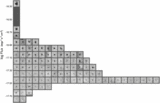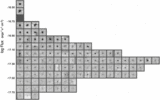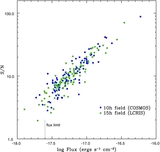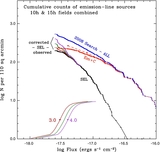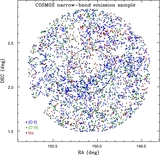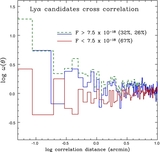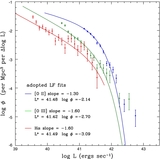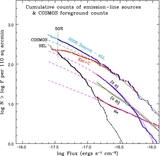Image Details
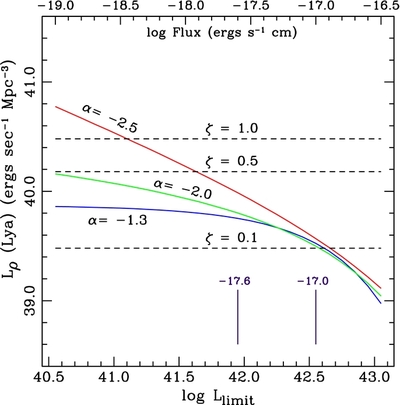
Caption: Figure 12.
Level of luminosity density required for maintaining reionization at z ~ 5.7 with a population of faint LAEs. The green, blue, and red curves show the integrated luminosity density for the three values of faint-end slope α −1.3, −2.0, and −2.5, respectively, that characterize the "best fit" and ±1σ bounds of our LAE LF result. For slopes α < −2.0 there is substantial progress toward reaching critical flux density, ζ = 1, from our prior limit (Martin08) of the LAE LF, log L (erg s −1) ~42.55, to the lower-luminosity limit of the MNS survey. By log L (erg s −1) ~41.95 about 20% if the critical flux density ζ = 1.0 has been reached with the α = −2.0 slope, or about 40%, if the Lyman-continuum escape fraction is as high as 20%, or all, for an escape fraction of about 50%—not impossible for these low-luminosity, high- z LAEs. Extrapolation to fainter limits, and/or a steeper slope of α = −2.5, further increase the likelihood that LAEs alone can provide the critical flux density to complete reionization at z ~ 6.
Copyright and Terms & Conditions
© 2011. The American Astronomical Society. All rights reserved.


